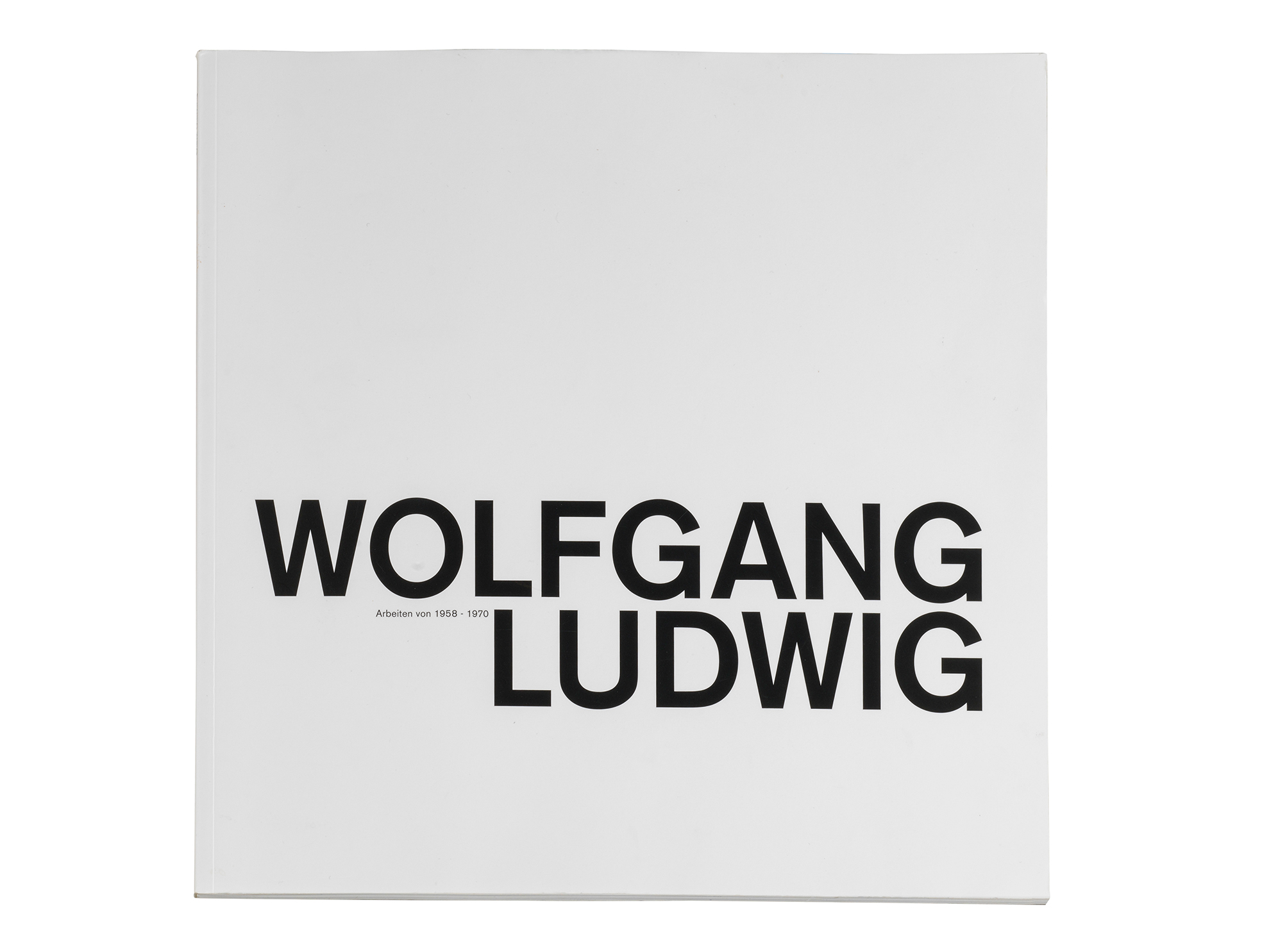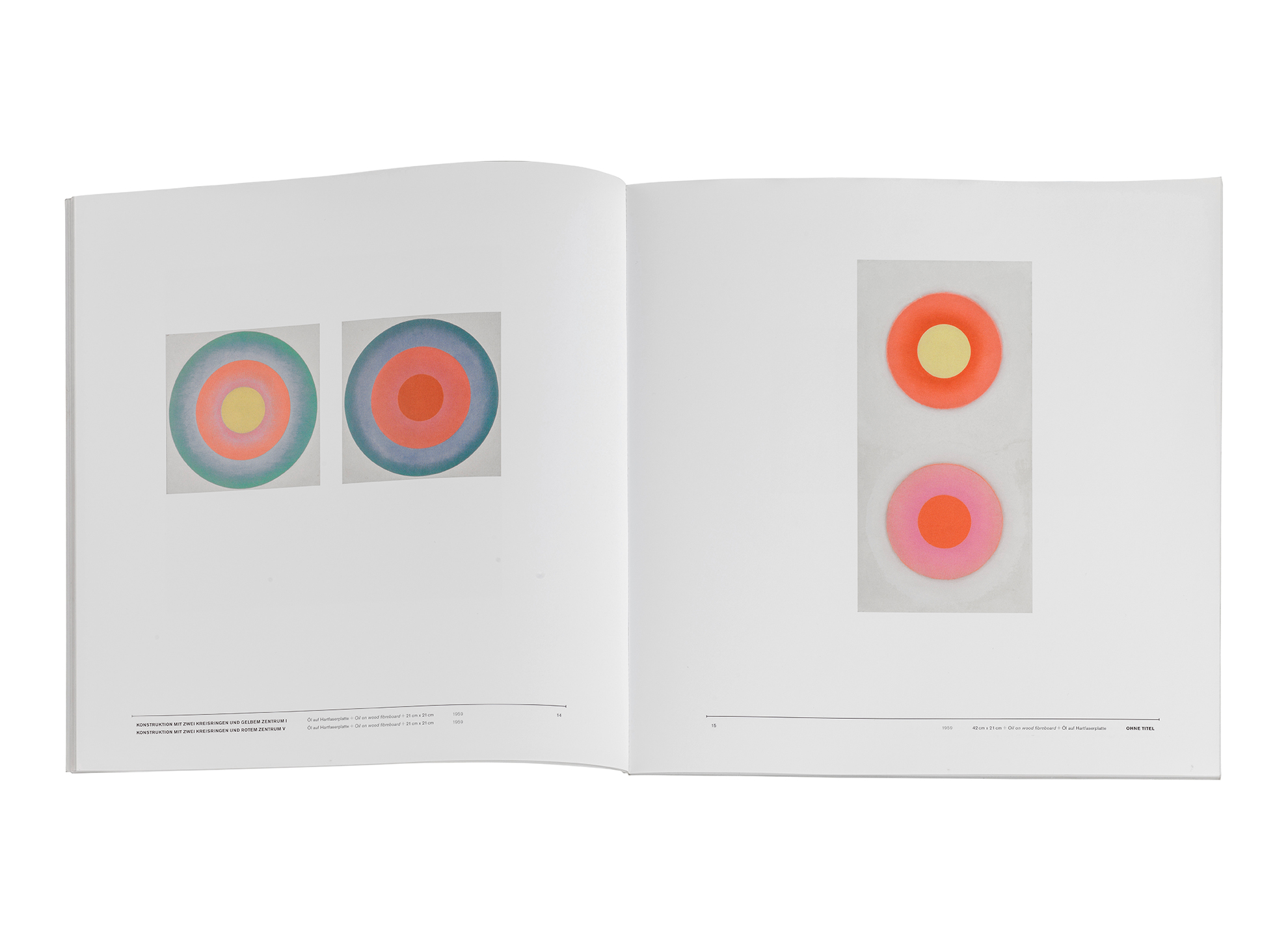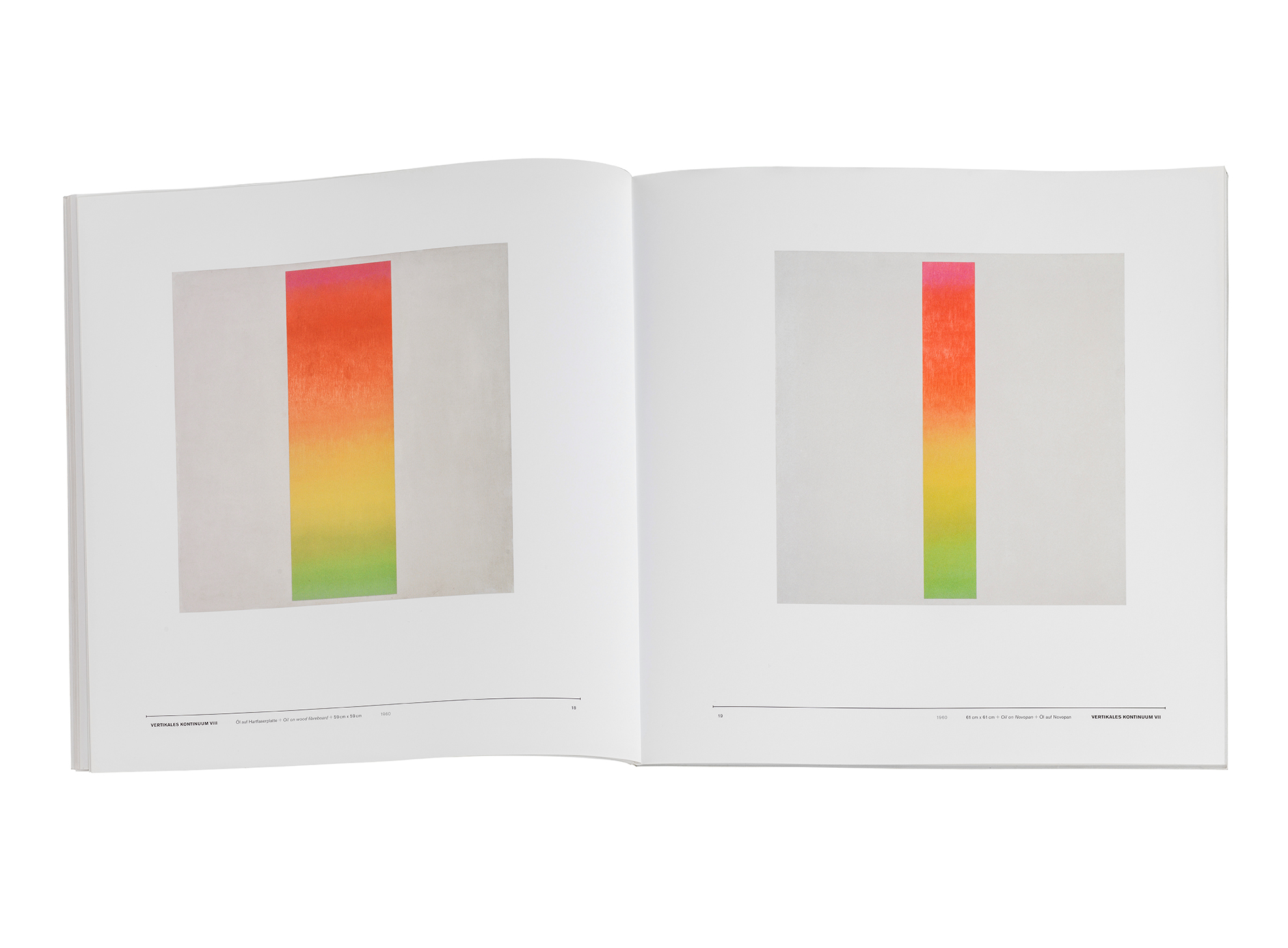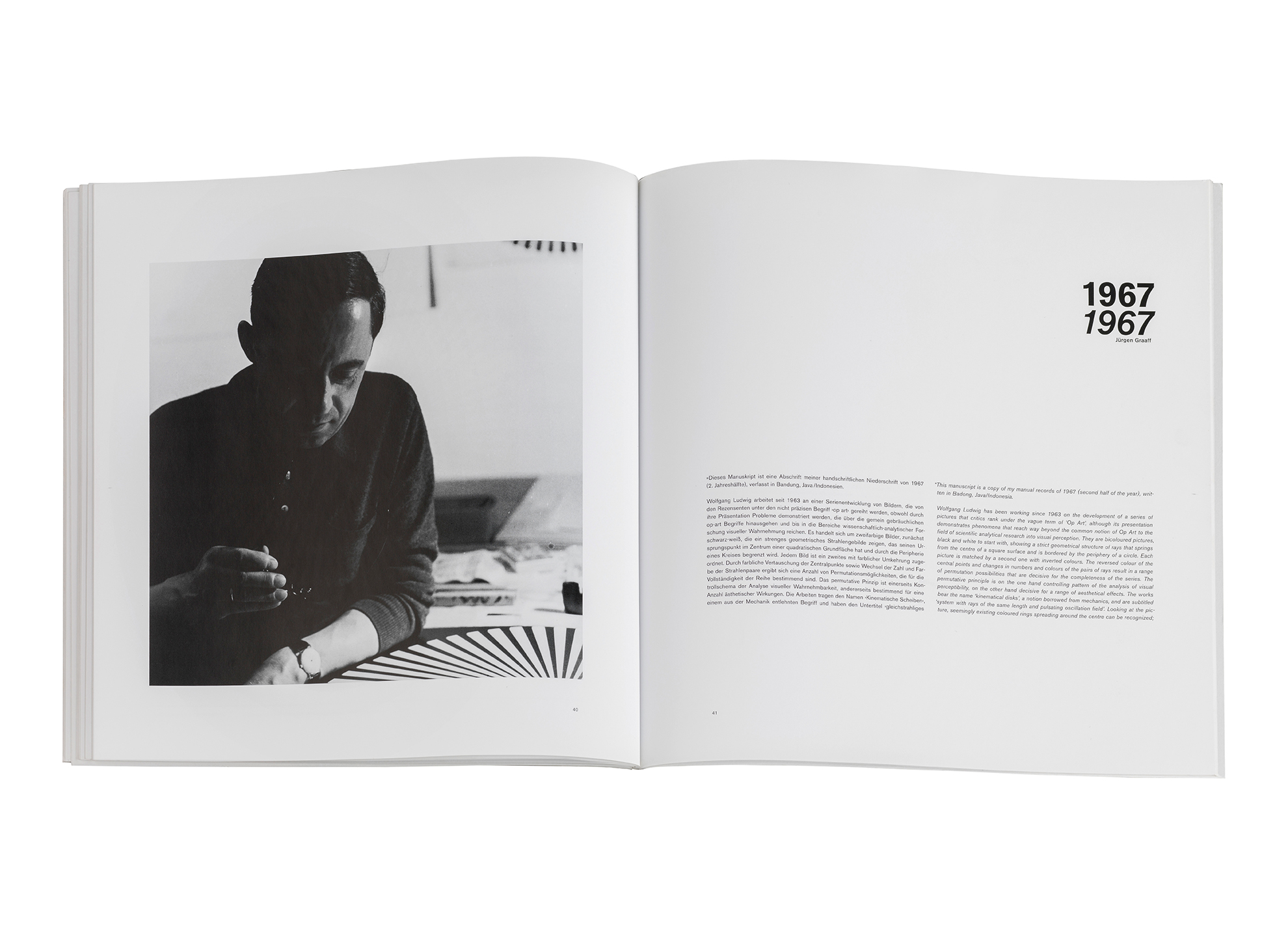Wolfgang Ludwig
Arbeiten von 1958 - 1970
Dierk Dierking (Editor)
German, English
Cologne 2010
56 pp., 26 ills.
29,7 cm x 29,7 cm
ISBN 978-3-00-030904-5
Price: 30 CHF plus postage

In summer 2007 I travelled to London for a meeting with a collector of old tribal art. On the way to my appointment I stopped at the window of a gallery close to Bond Street. Between the works of familiar Op Art stars such as Riley, Vasarely, Morellet or von Graevenitz I saw one piece that made a lasting impression on me. However, the London gallery was closed that Monday, my call from Cologne the day after almost discouraging. I was told that the piece of art in question was already sold, but that the artist was German: Professor Wolfgang Ludwig. After lengthy research and several unsuccessful calls, I managed to get in contact with the artist in Berlin. My wife and I set off soon afterwards, met the Ludwig couple in Zehlendorf and spent an unforgettable afternoon with two wonderful people whose positive ways fascinated us. They would not even hear of us buying a 'Kinematical disk' like the one I had seen in London – it was presented to us as a gift.
As a gallery owner and specialist in so-called 'primitive' art, I was especially charmed by Ludwig's earlier works, created between 1958 and 1970. Great art, be it by African or Oceanic carvers or from the studio of this 'Berliner by choice', is energetic. Whether non-European carvings following an aesthetic that is foreign to us, or Ludwig's disks, and colour sequences: they strike and affect the viewer directly, without the need for big explanations, in an archaic way, as it were. The works 'make the visitor descend into colour, plunge into the infinite in the mirror or offer him a poetic play of light, Dr. Martina Weinhart formulated aptly in her text on the Op Art exhibition in Frankfurt's Schirn Kunsthalle in 2007. She maintained that this kind of works did not only have physical properties such as colour vibration or a flickering of light, but had an effect on the viewer's overall consciousness. An illness of his hands, of all things, set tight limits to Wolfgang Ludwig's career. As from 1970 he worked as a professor of visual communication at the Academy of Art in Berlin. Until this point in time, which prematurely ended his work as an artist, he was without a doubt one of the most illustrious artists of international Op Art, of which many were his friends and with whom he had already exhibited at the New York Museum of Modern Art in 1963.
Wolfgang and I started plans for a first comprehensive solo exhibition since the begin ning of his artist career, with a few select pieces of non-European art, together. I would have loved to realize it in his lifetime. Wolfgang Ludwig died in spring 2009. This publication is a homage to a great, almost forgotten artist.
Dierk Dierking (Cologne, April 2010)
As a gallery owner and specialist in so-called 'primitive' art, I was especially charmed by Ludwig's earlier works, created between 1958 and 1970. Great art, be it by African or Oceanic carvers or from the studio of this 'Berliner by choice', is energetic. Whether non-European carvings following an aesthetic that is foreign to us, or Ludwig's disks, and colour sequences: they strike and affect the viewer directly, without the need for big explanations, in an archaic way, as it were. The works 'make the visitor descend into colour, plunge into the infinite in the mirror or offer him a poetic play of light, Dr. Martina Weinhart formulated aptly in her text on the Op Art exhibition in Frankfurt's Schirn Kunsthalle in 2007. She maintained that this kind of works did not only have physical properties such as colour vibration or a flickering of light, but had an effect on the viewer's overall consciousness. An illness of his hands, of all things, set tight limits to Wolfgang Ludwig's career. As from 1970 he worked as a professor of visual communication at the Academy of Art in Berlin. Until this point in time, which prematurely ended his work as an artist, he was without a doubt one of the most illustrious artists of international Op Art, of which many were his friends and with whom he had already exhibited at the New York Museum of Modern Art in 1963.
Wolfgang and I started plans for a first comprehensive solo exhibition since the begin ning of his artist career, with a few select pieces of non-European art, together. I would have loved to realize it in his lifetime. Wolfgang Ludwig died in spring 2009. This publication is a homage to a great, almost forgotten artist.
Dierk Dierking (Cologne, April 2010)
Wolfgang Ludwig
Arbeiten von 1958 - 1970

Dierk Dierking (Editor)
German, English
Cologne 2010
56 pp., 26 ills.
29,7 cm x 29,7 cm
ISBN 978-3-00-030904-5
Price: 30 CHF plus postage
In summer 2007 I travelled to London for a meeting with a collector of old tribal art. On the way to my appointment I stopped at the window of a gallery close to Bond Street. Between the works of familiar Op Art stars such as Riley, Vasarely, Morellet or von Graevenitz I saw one piece that made a lasting impression on me. However, the London gallery was closed that Monday, my call from Cologne the day after almost discouraging. I was told that the piece of art in question was already sold, but that the artist was German: Professor Wolfgang Ludwig. After lengthy research and several unsuccessful calls, I managed to get in contact with the artist in Berlin. My wife and I set off soon afterwards, met the Ludwig couple in Zehlendorf and spent an unforgettable afternoon with two wonderful people whose positive ways fascinated us. They would not even hear of us buying a 'Kinematical disk' like the one I had seen in London – it was presented to us as a gift.
As a gallery owner and specialist in so-called 'primitive' art, I was especially charmed by Ludwig's earlier works, created between 1958 and 1970. Great art, be it by African or Oceanic carvers or from the studio of this 'Berliner by choice', is energetic. Whether non-European carvings following an aesthetic that is foreign to us, or Ludwig's disks, and colour sequences: they strike and affect the viewer directly, without the need for big explanations, in an archaic way, as it were. The works 'make the visitor descend into colour, plunge into the infinite in the mirror or offer him a poetic play of light, Dr. Martina Weinhart formulated aptly in her text on the Op Art exhibition in Frankfurt's Schirn Kunsthalle in 2007. She maintained that this kind of works did not only have physical properties such as colour vibration or a flickering of light, but had an effect on the viewer's overall consciousness. An illness of his hands, of all things, set tight limits to Wolfgang Ludwig's career. As from 1970 he worked as a professor of visual communication at the Academy of Art in Berlin. Until this point in time, which prematurely ended his work as an artist, he was without a doubt one of the most illustrious artists of international Op Art, of which many were his friends and with whom he had already exhibited at the New York Museum of Modern Art in 1963.
Wolfgang and I started plans for a first comprehensive solo exhibition since the begin ning of his artist career, with a few select pieces of non-European art, together. I would have loved to realize it in his lifetime. Wolfgang Ludwig died in spring 2009. This publication is a homage to a great, almost forgotten artist.
Dierk Dierking (Cologne, April 2010)
As a gallery owner and specialist in so-called 'primitive' art, I was especially charmed by Ludwig's earlier works, created between 1958 and 1970. Great art, be it by African or Oceanic carvers or from the studio of this 'Berliner by choice', is energetic. Whether non-European carvings following an aesthetic that is foreign to us, or Ludwig's disks, and colour sequences: they strike and affect the viewer directly, without the need for big explanations, in an archaic way, as it were. The works 'make the visitor descend into colour, plunge into the infinite in the mirror or offer him a poetic play of light, Dr. Martina Weinhart formulated aptly in her text on the Op Art exhibition in Frankfurt's Schirn Kunsthalle in 2007. She maintained that this kind of works did not only have physical properties such as colour vibration or a flickering of light, but had an effect on the viewer's overall consciousness. An illness of his hands, of all things, set tight limits to Wolfgang Ludwig's career. As from 1970 he worked as a professor of visual communication at the Academy of Art in Berlin. Until this point in time, which prematurely ended his work as an artist, he was without a doubt one of the most illustrious artists of international Op Art, of which many were his friends and with whom he had already exhibited at the New York Museum of Modern Art in 1963.
Wolfgang and I started plans for a first comprehensive solo exhibition since the begin ning of his artist career, with a few select pieces of non-European art, together. I would have loved to realize it in his lifetime. Wolfgang Ludwig died in spring 2009. This publication is a homage to a great, almost forgotten artist.
Dierk Dierking (Cologne, April 2010)
IMPRINT
© DIERKING 2025







